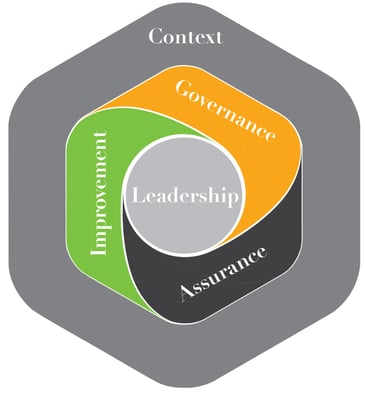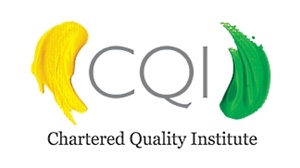[CQI Guest Post]
Good Governance, Assurance and Improvement are the tools used by a quality professional. Unfortunately, a focus on tools can create the feeling that quality management is some kind of dark art, unfathomable to others but accepted as a necessary evil – ‘we need that ISO certificate!’ It can also lead to a certain faddism in quality management – ‘this year we are doing lean!’ – and that ‘here we go again’ feeling.
What’s to be done?
There are two competence areas in the CQI Competency Framework (pictured) that seek to address this issue - Context and Leadership. They ensure that individuals and indeed organisations take account of their context, and ensure the appropriate application of the right tools and approaches. Of these two, Context is king and asks the individual and the organisation to consider what the organisation’s strategy is, and what threats and opportunities need to be considered.

How does this help with improving quality?
Looking at the organisation’s strategy through a quality management lens is useful, both to recognise unidentified risk and to inform the organisation’s quality strategy – supporting the wider business strategy. An organisation focusing on cost reduction will require a different quality strategy, to one that needs to decrease time to market new products and services.
Only once the quality strategy, objectives and plans are decided, can you look at the changes needed to your Governance, Assurance and Improvement approach – and the tools, methods, associated skills and competences required to deliver it. Of course this takes change management and leadership skills to help the organisation recognise the need for and to lead the implementation of change.
This is no easy undertaking and if context is king, leadership is the emperor.

The Competency Framework
The CQI Competency Framework provides an overview of the competencies that the profession requires to do its job effectively.
It is structured around what we do (governance, assurance, improvement), the context in which we work and the behaviours we must show. The individual level of knowledge required depends on career stages and specialisms.
The framework is designed to:
- Provide clear benchmarks for competence for use by the Institute, employer and individuals
- Help individuals plan their career
- Help employers develop their own competency frameworks
- Establish requirements for CQI learning and development assets and qualifications
- Tell the wider world what the Quality Profession does
Governance, Assurance, Improvement defined
Governance
Good governance ensures the interest of customers and stakeholder are understood and respected.
Assurance
Agile Assurance establishes appropriate methodologies to protect and enhance reputation through mitigation of risk.
Improvement
Evaluation and Improvement transforms ways of working to maximise effectiveness and eliminate unnecessary cost and waste.
For further great articles straight into your inbox, subscribe to the Triaster blog today.
Related articles
Re-Positioning the Quality Profession [CQI Guest Post]
CQI Competency Framework: Governance [CQI Guest Post]
Linking Governance and Assurance to improve Quality [CQI Guest Post]
Written by Vince Desmond
Acting Chief Executive at The Chartered Quality Institute
